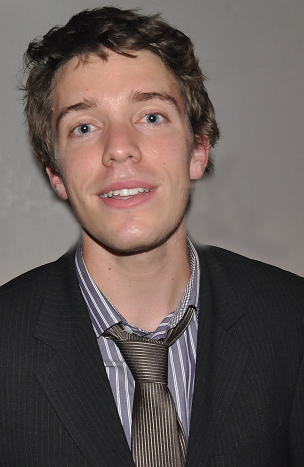 Guillaume Freychet is a postdoctoral fellow at ALS Beamlines 7.3.3 and 11.0.1.2, the small- and wide-angle x-ray scattering (SAXS/WAXS /GISAXS) beamlines. His research is focused on the development of algorithms and data treatments for various scattering techniques.
Guillaume Freychet is a postdoctoral fellow at ALS Beamlines 7.3.3 and 11.0.1.2, the small- and wide-angle x-ray scattering (SAXS/WAXS /GISAXS) beamlines. His research is focused on the development of algorithms and data treatments for various scattering techniques.
How did you end up at the ALS?
I was a PhD student conducting some experiments at SOLEIL in France; while there I met some scientists from ALS Beamline 11.0.1 who were there doing their own research. My experiments at SOLEIL weren’t going so well, so they proposed that I send some samples back to the ALS with them. When I was in the Bay Area a few months later I met with Cheng Wang, who was in charge of my samples at 11.0.1, and Alexander Hexemer. At that time, my PhD was about to end, so we stayed in contact about potential postdoc opportunities. I got in touch after graduation and the ALS happened to have an opening for me. Everything happened very quickly, almost too easily! I’ve been here since last December.
What is the main focus of your research here?
I’m mostly doing algorithms development and data analysis for various scattering techniques, working with Beamline Scientist Alexander Hexemer at Beamline 7.3.3. I’m working a lot on highly ordered materials, such as line gratings. The technique I’m using is called critical-dimension small-angle x-ray scattering (CD-SAXS). My focus is on data analysis, but I’m also doing some beamline experiments.
What has kept you interested in this field?
There are so many different topics to explore; so many materials and techniques. After graduating from high school, I started off in engineering school and I focused more on the process of creating semiconductor materials, working with some commercial companies. Now I’m more focused on the research, and I would like to stay in research. Eventually, I’d like to go back to France and become a professor.
What have you liked most about being at the ALS?
I really enjoy the view of San Francisco from the ALS! I also appreciate that our scattering beamlines are really state of the art. There are so many people doing complementary research here, it’s such an interesting place to be. I enjoy the fact that there are a lot of young postdocs at the ALS; it’s a nice community to be a part of.
What’s the most exciting aspect of your research?
The study of line gratings is relatively new, which makes the research exciting. The main problem is to be able to characterize the samples with a sub-nanometer resolution. Nowadays there are a lot of techniques, but no one of them can reveal everything. A lot of options and directions can be explored.
Have you been enjoying your time in the Bay Area?
I’ve loved the weather exploring the Bay Area. Working on my English language skills has been great. I just really enjoy the American culture—seeing different sports (go Bears!), eating different foods. I love sports, so I’m biking up to the Lab every day.